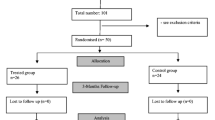Abstract
The Badgastein spa shows almost all the special geological and hydrological features existing in the northeastern central Alps. Situated within the Tauern window, the open joint system enables the infiltration of surface water to great depths. There it becomes heated and loaded with radon and trace elements such as fluor. The water discharges as thermal water springs at the steep right flank of the cascade of the Gastein-Ache. This hydraulic process occurs during a span of 3600–3800 years. The springs are captured in galleries, and the largest discharge is in gallery IX (2518 m3/d−1). The spa became known worldwide in the 19th century by visiting aristocrats from Central and Eastern Europe. The most important event in the 20th century was the discovery of the heat joint in the Böckstein gallery. In 1940 an effort to reactivate gold mining in the Radhausberg near Böckstein south of Badgastein failed. However, the miners had the unexpected experience of being cured of rheumatism. A connection between the great depth and high temperature in the gallery was made by the discovery of the joint set with heat and radon emanation. In the medical stations of the Böckstein gallery treatment of polyarthritis has become especially successful.
Similar content being viewed by others
References
Czurda K (1993) Allgemeine geologische Grundlagen der Heilwasserprovinz Zentralhochalpen. 5.2.2. Heilwässer der Tuxer und Zillertaler Alpen. In: Zötl J and Goldbrunner JE (Eds), Die Mineral- und Heilwässer Österreichs, geologische Grundlagen und Spurenelemente. Wien: Springer-Verlag. 321 pp
Exner C (1956) Erläuterungen zur geologischen Karte der Umgebung von Gastein. Hsg. Geologische Bundesanstalt. Wien: Springer-Verlag. 168 pp
Exner C (1965) Die Geologie des Thermalstollens und seiner Umgebung. In: Scheminzky F (Ed), Der Thermalstollen von Badgastein-Böckstein. Innsbruck, Austria. 496 pp
Job C and Zötl J (1969) Zur Frage der Herkunft des Gasteiner Thermalwassers. Graz, Austria; Steir. Beitr Hydrogeol 21:51–225
Scheminzky F (Ed) (1965) Der Thermalstollen von Badgastein-Böckstein. Innsbruck, Austria. 496 pp
Scheminzky F and Komma E (1959) Große Heilwasseranalyse des Thermalwassers Badgastein. Austria. 35 pp
Stini J (1965) Hitzekluft im Rathausberg, Störungen des Gebirgsbaues und Gasteiner Heilquellen. In: Scheminzky F (Ed), Der Thermalstollen von Badgastein-Böckstein. Innsbruck, Austria. 496 pp
Tollman A (1986) Die Entwicklung des Reliefs der Ostalpen. Mitt Oeterr. Geogr Ges 128 pp
Weise S (1993) Ergebnisse der Heliumuntersuchungen von Bad Königsquell und der Elisabeth-Quelle Badgastein. In: Zötl J and Goldbrunner JE (Eds), Die Mineral- und Heilwässer Österreichs, geologische Grundlagen und Spurenelemente. Wien: Springer-Verlag. 321 pp
Zötl J and Goldbrunner JE (1993) Die Mineral- und Heilwässer Österreichs, geologische Grundlagen und Spurenelemente. Wien: Springer-Verlag. 321 pp
Author information
Authors and Affiliations
Rights and permissions
About this article
Cite this article
Zötl, J.G. Badgastein spa—Austrian central Alps. Geo 26, 240–245 (1995). https://doi.org/10.1007/BF00770474
Received:
Accepted:
Issue Date:
DOI: https://doi.org/10.1007/BF00770474




